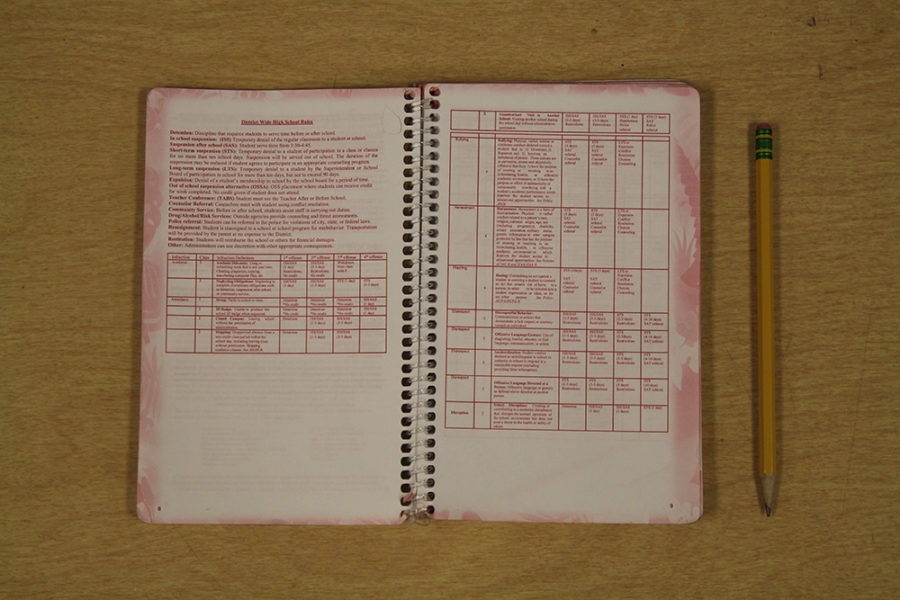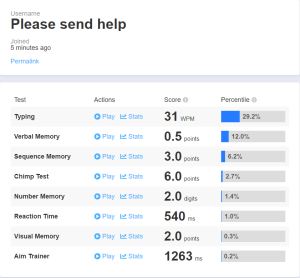Guilty until proven innocent
LHS students can use their student planner to look up disciplinary rules and the different levels of punishment.
April 30, 2019
Many students compare school to jail due to its long hours and locked doors. The direct difference between the two is that criminals receive a fair trial and have access to their civil rights. Students don’t.
When it comes to the punishment and wrongdoings of students, every situation is unique. There are variables that need to be held to a standard and stay consistent. These variables include communication, measurable discipline and the student’s power to question their punishment. Teachers and coaches use a variety of styles when it comes to educating their students, but this furthers the inconsistency in punishment, sometimes creating unfair and dangerous situations for students. Teachers in a position of authority can often abuse their power based on ties to the students and the situation.
LHS’ punishments are divided into six tiers: the first tier consists of minor offenses such as sweeps; the second tier is where the offenses turn to skipping and other issues; tier three consists of insubordination, being disrespectful and neglecting obligations; acts such as tobacco use, drugs, alcohol and pornography are leveled at tier four; tier five is bullying and harassment; tier six gets more violent and deals with firearms, bomb threats, fires and illegal activity. These brackets of punishments are included in the book of policies; however, the enforcement of these policies lacks consistency.
Communication is an issue that needs to be taken on with full force. If an issue does arise with a student, parents need to be notified as soon as possible with no exceptions, especially before any action is taken.
I myself have experienced the lack of communication from teachers and administration that has led to burdensome and painful circumstances. My freshman year, I fell in love with an extracurricular. I continued to hit my goals in places I never thought were possible. I traveled around the nation to participate and compete; in fact, I spent a whole month last summer at a competitive camp in Missouri. Then, the unthinkable happened. In one day, my place and my category in this activity were dissolved. I would rather not give specific details about my story, as it may cause confusion and is somewhat personal, but I can tell you that the situation was not handled with a solution based thinking process. My punishment wasn’t warranted, and there was little to no communication involved. My parents had no idea any of this was happening and I didn’t either. It felt like my world blew up in my face and what I had to say didn’t matter. The administration and the teacher knew everything, yet no one ever told my parents or me. I fought the action and got my spot back but because of the damage that was done, nothing felt the same. The passion I once had was diminished. Other LHS students have had similar experiences.
“My mother had no idea I got in trouble. I got called by my teacher when they kicked me off and had no idea I got an activities violation,” said an anonymous source.” She had no idea I had to come and talk to the administration, and the administration called me to their office to talk. [My mom] was not told any of this until I told her myself.”
Creating and enforcing the standard of informing parents and students before any action is taken would have limited the destruction in my circumstance and others.
A second issue within the LHS disciplinary system is the reaction to students who questioned these procedures. Students should be able to question their punishment and protest it in a peaceful way.
“Yes [students should be able to protest and question disciplinary action]. It’s in our amendments,” said sophomore Makayla Mofle. “Students are quiet a lot because of our age. We have to listen to [teachers and administration] in high school. We should be able to why things are punishable and why things are being executed the way they are.”
Protesting these accusations can become difficult when the discussion comes down to the teacher’s word compared to the student’s.
“It’s like a mini court in my office sometimes,” said assistant principal Don Ryswyk. “There has to be evidence before disciplining a kid. When it’s the student’s word against the teacher’s word, I side with the teacher unless there is a lot of evidence in a different direction.”
While teachers are in positions of authority, not weighing what the student is saying allows for bias and predispositions to thrive.
“I thought what happened to me was completely unfair the entire school board did not communicate with me about anything,” said an anonymous source. “They took actions into their own hands, regardless of what I had to say and regardless of my story. I talked to the teacher, and he said that if he knew that, he wouldn’t have told the school board.”
This is not only another reason that the communication flaws need to be addressed and solved but also an accurate representation as to why student’s voices must be heard. These actions, taken without communication and without hearing every side, could ruin what a student has built for themselves. It’s astonishing that no attention has been brought to this earlier.
All disciplinary action needs to be consistent among each student in every activity. Consistency doesn’t question if people should or should not be punished for their actions but looks to have measurable punishment that is equal among all students.
“[Punishment is] definitely not [consistent],” said Mofle. “If a student has good or bad grades or previous histories, it determines what the punishment is. If a certain teacher doesn’t like a student, they will get punished differently compared to a student that’s liked. Teachers need to have an open mind because it can affect the student’s life later on.”
For activities, a way to solve these issues would be having every activity create a form of a contract that does not target students but makes the standard of what is expected clear. In general, the administration should hold teachers accountable for communicating issues to all parties involved along with recognizing and hearing all student’s voices.









